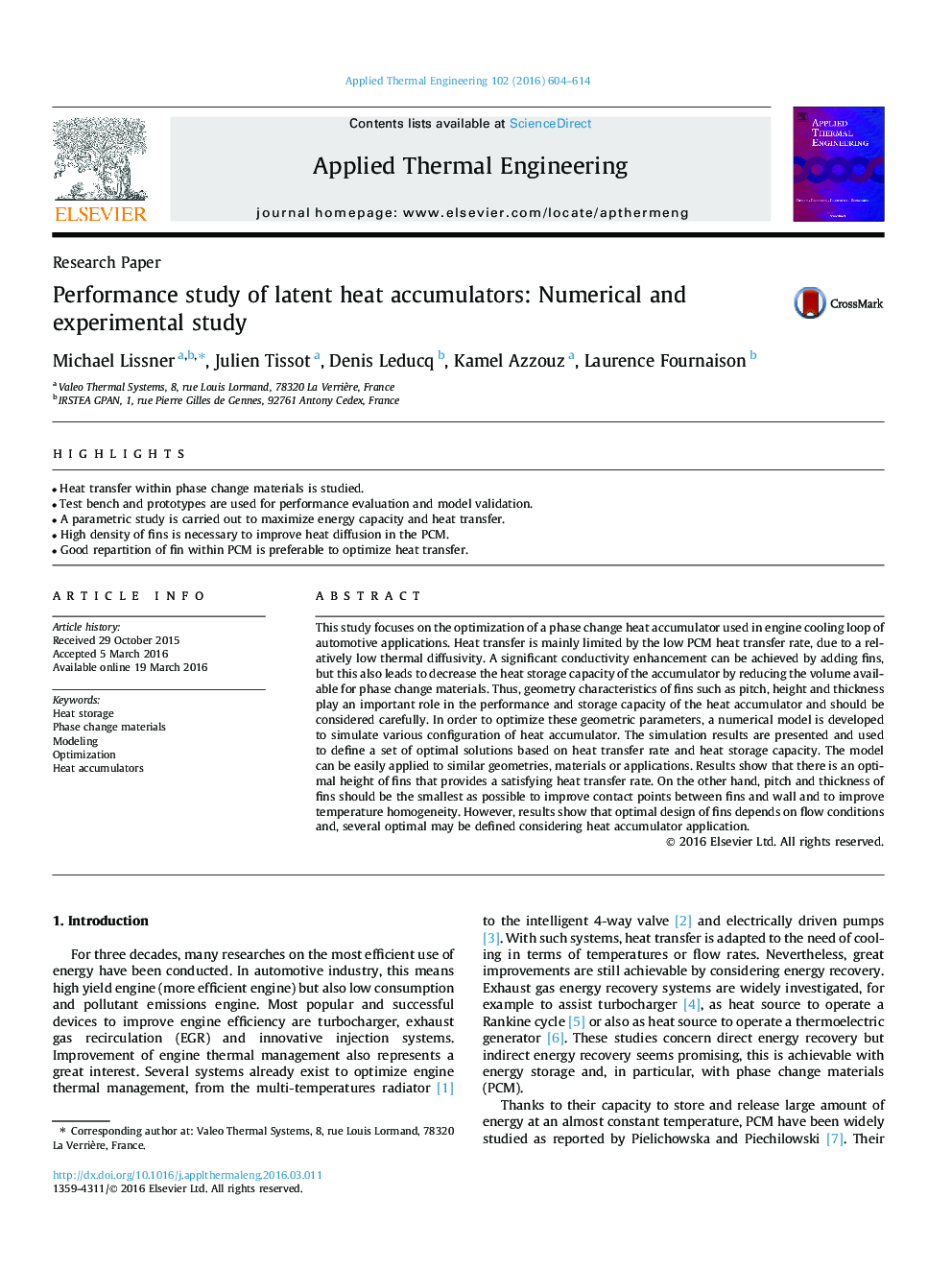| Article ID | Journal | Published Year | Pages | File Type |
|---|---|---|---|---|
| 7048112 | Applied Thermal Engineering | 2016 | 11 Pages |
Abstract
This study focuses on the optimization of a phase change heat accumulator used in engine cooling loop of automotive applications. Heat transfer is mainly limited by the low PCM heat transfer rate, due to a relatively low thermal diffusivity. A significant conductivity enhancement can be achieved by adding fins, but this also leads to decrease the heat storage capacity of the accumulator by reducing the volume available for phase change materials. Thus, geometry characteristics of fins such as pitch, height and thickness play an important role in the performance and storage capacity of the heat accumulator and should be considered carefully. In order to optimize these geometric parameters, a numerical model is developed to simulate various configuration of heat accumulator. The simulation results are presented and used to define a set of optimal solutions based on heat transfer rate and heat storage capacity. The model can be easily applied to similar geometries, materials or applications. Results show that there is an optimal height of fins that provides a satisfying heat transfer rate. On the other hand, pitch and thickness of fins should be the smallest as possible to improve contact points between fins and wall and to improve temperature homogeneity. However, results show that optimal design of fins depends on flow conditions and, several optimal may be defined considering heat accumulator application.
Related Topics
Physical Sciences and Engineering
Chemical Engineering
Fluid Flow and Transfer Processes
Authors
Michael Lissner, Julien Tissot, Denis Leducq, Kamel Azzouz, Laurence Fournaison,
